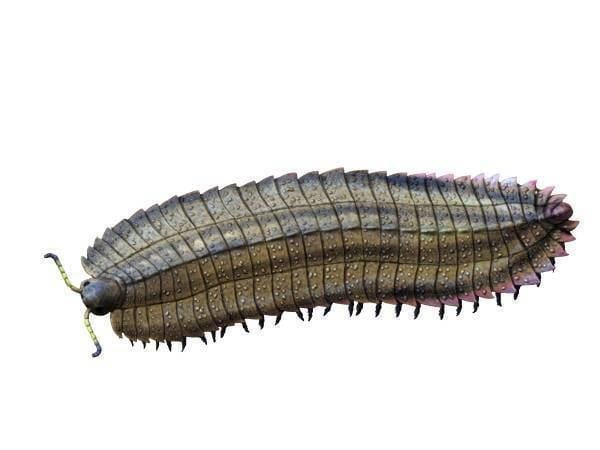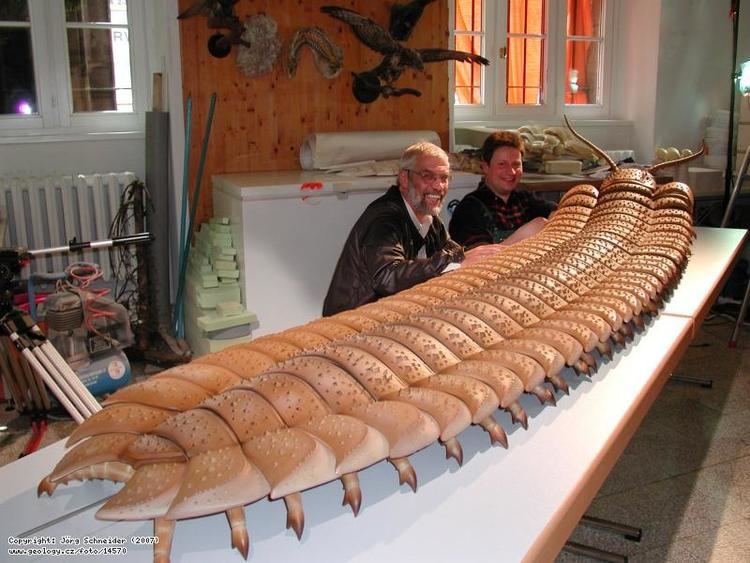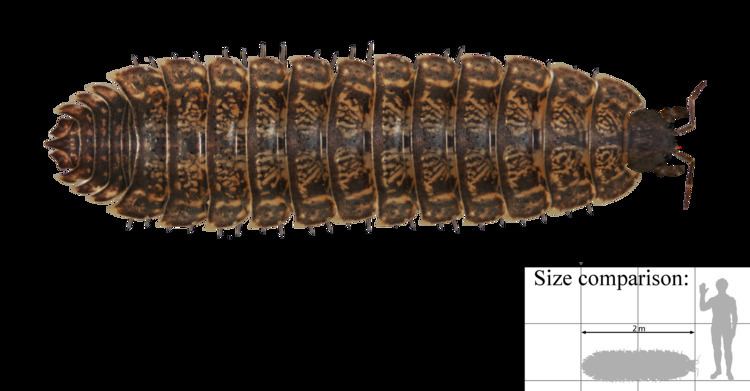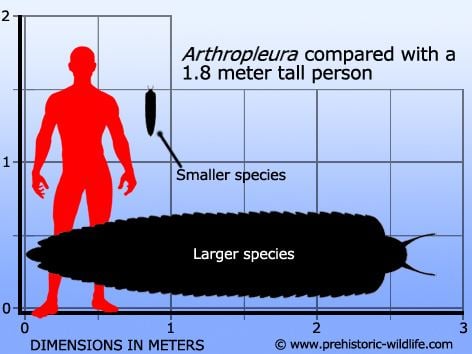Scientific name Arthropleura Order Arthropleurida | Higher classification Arthropleuridae Rank Genus Subclass Arthropleuridea | |
 | ||
Family † ArthropleuridaeZittel, 1848 Similar Meganeura, Jaekelopterus, Eurypterid, Pulmonoscorpius kirktonensis, Brontoscorpio anglicus | ||
Walking with monsters arthropleura
Arthropleura (Greek for jointed ribs) is a genus of extinct millipede arthropods that lived in what is now northeastern North America and Europe around 315 to 295 million years ago, during the late Carboniferous to early Permian periods. The larger species of the genus are the largest known land invertebrates of all time, and would have had few, if any, predators.
Contents
- Walking with monsters arthropleura
- Paleo profile arthropleura
- Description
- Paleobiology
- Extinction
- References

Paleo profile arthropleura
Description

Arthropleura species ranged in length from 0.3 to 2.3 metres (0.98 to 7.55 ft) and a width up to 50 centimetres (1.6 ft). Arthropleura was able to grow larger than modern arthropods, partly because of the greater partial pressure of oxygen in Earth's atmosphere at that time, and because of the lack of large terrestrial vertebrate predators.

The flattened body of Arthropleura is composed of approximately 30 jointed segments, each of which was covered by two side plates and one center plate. The ratio of pairs of legs to body segments was approximately 8:6, similar to some present-day millipedes.
Paleobiology
Contrary to earlier and popular beliefs, Arthropleura was not a predator but a herbivorous arthropod. Because none of the known fossils have the mouth preserved, scientists suppose that Arthropleura did not have strongly sclerotized and powerful mouth parts, because such would have been preserved at least in some of the fossils. Some fossils have been found with lycopod fragments and pteridophyte spores in the gut and in associated coprolites.
Fossilized footprints from Arthropleura have been found in many places. These appear as long, parallel rows of small prints, which show that it moved quickly across the forest floor, swerving to avoid obstacles, such as trees and rocks. Its tracks have the ichnotaxon name Diplichnites cuithensis. Tracks from Arthropleura up to 50 cm wide have been found at Joggins, Nova Scotia.
Extinction
Arthropleura became extinct at the end of the Carboniferous period, when the moist climate began drying out, reducing the rainforests of the Carboniferous, and allowing the desertification characteristic of the Permian.
